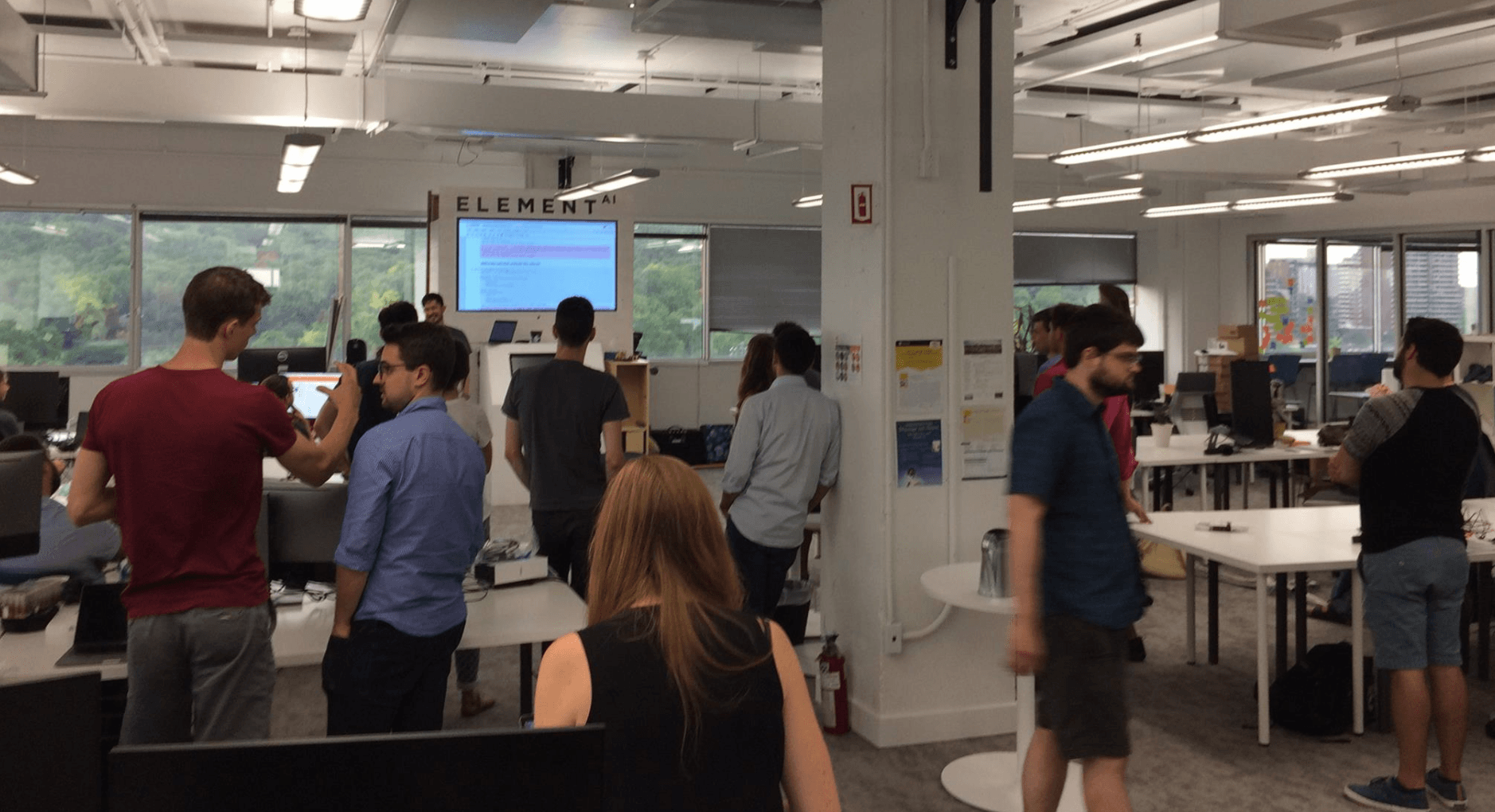Episode summary: This week, AI in Industry features Jeremy Barnes, Chief Architect at Element AI. Jeremy talks about the common mistakes some businesses might make while adopting AI to solve broad business problems. He also sheds light on the problem areas that could raise the market value of businesses through AI adoption, hiring the right talent with the right combination of subject matter expertise and business experience, and the business and technical aspects executives should consider before contemplating the adoption of AI.
Element AI was a big part of our recent deep-dive coverage on the AI scene in Montreal – and we were happy to be able to chat with Jeremy one-to-one.
Subscribe to our AI in Industry Podcast with your favorite podcast service:
Guest: Jeremy Barnes, Chief Architect at Element AI
Expertise: Machine learning, mathematical modeling, computational linguistics, manipulation of terabytes of unstructured data.
Brief recognition: Since 2017, Jeremy Barnes has been working as Chief Architect with Element AI. He has a bachelor’s degree in Systems Engineering from The Australian University. He has also founded and co-founded several machine-learning companies, including Datacratic, Idilia Inc., and mldb.ai.
Big Idea
Jeremy shares three key ideas for any business interested in applying AI to their business challenges:
- Start with business problems that could potentially move market shares: Adopting AI for applications gathering intelligence and insights based on historical company data could help optimize internal processes. However, they do not usually give a significant return on the market. Using AI in applications that work with forward-looking data, such as forecasting or predictive analytics for sales, inventory, manufacturing pipeline, etc., could help businesses significantly increase their market value. For example, Jeremy asks us to consider the cut-throat delivery service business. Applying AI to address the problem of bringing down the cost of delivering a parcel by 10% might move the market share to an extent. However, using AI to deliver shipments under six hours to the majority of the customer base would significantly raise the business market value. This could potentially involve using AI in several applications supporting the delivery system, such as tracking the delivery across locations, figuring out the shortest possible routes and methods to deliver packages, local delivery personnel allotment, and reducing the overall cost of shipment for the company while optimizing the said processes.
- Focus on augmentation rather than complete automation: Businesses aiming for complete automation of processes might only save the salaries of people being reportedly replaced by AI. According to Jeremy, businesses that aim to make a return on the workforce by augmenting and increasing workforce efficiency using AI would achieve significant ROI. Instead of just brainstorming how to save on salary costs, companies might think about how they could multiply their production or revenue by enhancing processes with AI.
- Hire talent having both subject matter expertise and deep knowledge of AI: Jeremy feels that there is a lack of people who have deep knowledge of both AI and business problems they are applying AI to. In his opinion, such subject matter expertise would only come with a significant amount of time and experience spent in understanding the inner workings of the business and their market as well as acquiring a deep knowledge of AI tools relevant to the business.
In other words, according to Jeremy, companies contemplating the adoption of AI should have:
- A clear conception of big-picture business problems and their strategic advantages in furthering their market value
- Skills and talent to identify significant problems only AI can solve
- A deep knowledge of different AI applications solving different problems in their market

Interview Highlights on Businesses Considering AI Adoption
The main questions Jeremy answered on this topic are listed below. Listeners can use the embedded podcast player (at the top of this post) to jump ahead to sections they might be interested in:
- (2:52) How can traditional businesses identify opportunities for applying AI to their business problems?
- (08:13) How does Jeremy define developments in AI that shift market share value for businesses as opposed to applications that incrementally improve internal business processes?
- (13:25) What are some examples of AI applications being used to truly make a difference in improving market share, not just improving efficiencies?
- (17:13) What skills are required for businesses to identify opportunities that can use AI to improve market share by a significant amount?
- (20:14) What is the key takeaway message for businesses looking to apply AI?
Subscribe to our AI in Industry Podcast with your favorite podcast service:
Header image credit: (Dan Faggella’s personal photo, taken during in-person visit at Element AI headquarters, July 2017)
























